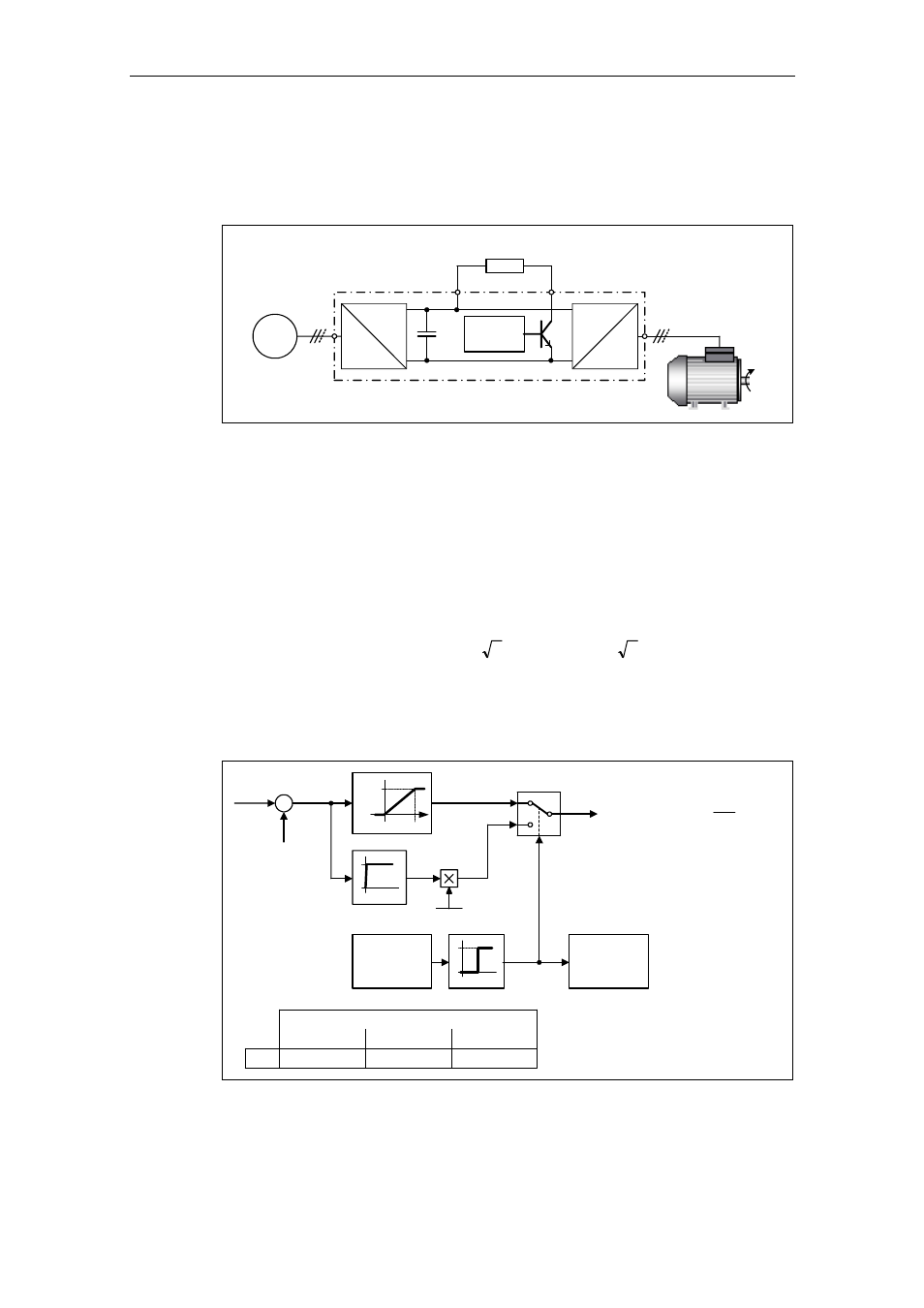Watson-Marlow MM440 User Manual
Page 207

Issue 10/06
3 Functions
MICROMASTER 440 Operating Instructions
6SE6400-5AW00-0BP0
207
The advantages of dynamic resistor braking include:
¾
The regenerative energy is not converted into heat in the motor
¾
It is significantly more dynamic and can be used in all operating states (not only
when an OFF command is output)
Chopper resistor
Chopper
control
B-
=
~
~
B+
=
~
MM4
Fig. 3-76
Connecting the chopper (braking) resistor
The braking energy in the DC link is converted into heat when dynamic braking is
activated (enabled using P1237). The energy is converted into heat using the
voltage-controlled chopper resistor (ballast resistor). Chopper resistors are used if
regenerative energy is dissipated in the DC link for a short time, e.g. when a drive
brakes and the drive should be prevented from being shutdown (tripped) with fault
message F0002 ("DC link overvoltage"). In this case, when the DC link threshold
V
DC chopper
is exceeded, then the chopper resistor is switched-in using an electronic
switch (semiconductor switch).
Switch-in threshold of the chopper resistor:
If P1254 = 0 :
0210
P
2
13
.
1
V
2
13
.
1
V
ply
sup
line
Chopper
,
DC
⋅
⋅
=
⋅
⋅
=
Otherwise :
1242
r
98
.
0
V
Chopper
,
DC
⋅
=
The chopper switch-in threshold V
DC chopper
is calculated as a function of parameter
P1254 (Auto detect V
DC
switch-on levels), either directly using the line supply
voltage P0210 or indirectly using the DC link voltage and r1242.
t
Chopper, ON
t
100
x
⋅
=
Chopper
V
DC, act
–
V
DC, Chopper
100 %
V
∆V
0
1
1
0
x
Alarm
A0535
Duty cycle
monitoring
0
1
P1237
Mains
200 - 240 V
9.8 V
∆
V
380 - 480 V
17.0 V
500 - 600 V
21.3 V
Fig. 3-77
Mode of operation of the dynamic braking